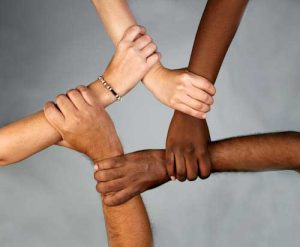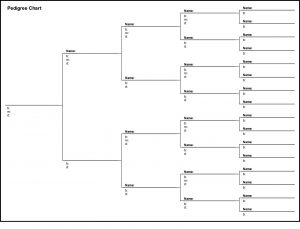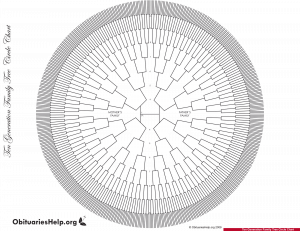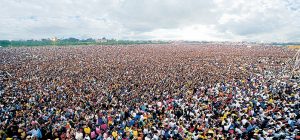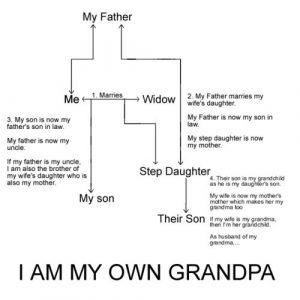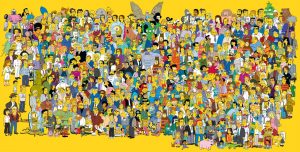Only arithmetic, I promise, and you’ll like the result.
You have 2 parents, 4 grandparents, 8 great grandparents, 16 great-great grandparents, and so on. With me so far? That’s about as hard as it gets.
Assume it’s about 20 years between generations (historically people have had kids at about the age of 20). Then if you go back in time 100 years, that’s about 5 generations, so you will have had 32 great-great-great grandparents in that generation. Here’s a family tree or pedigree chart for 5 generations – you can see the 32 slots on the right hand side for the names of your great-great grandparents.
Here’s a filled-in family tree going back 5 generations (not my family):
If you go back another 100 years, each of your great-great-great-grandparents will have had 32 great-great-great grandparents, so you have 32*32 = 1024 great-great-…-great grandparents. (You can figure out how many “greats” go in there.)
In other words, if you go back 200 years, to about the year 1800, you will have had over 1000 ancestors at that point in time in your family tree. That’s a wide tree – 1000 ancestors if you go back just 10 generations. The diagram below shows this in a neat circular format.
So go back another 200 years – we’re at the year 1600. Then each of your 1024 ancestors from 1800 will have had 1024 ancestors in the year 1600, so you’ll have 1024*1024 = 1,048,576 great*-grandparents, or over a million ancestors at that point. That’s a lot of holiday cards.
Go back another 200 years, and do this again, and you’d have over a billion ancestors in your family tree at that point (don’t try drawing it out – trust me). That takes us to 600 years ago, roughly in the year 1400, when the world population is estimated to have been only about 350 million.
So you have more ancestors in the year 1400 than there were people alive in the world at that time.
What does that mean? Well, the only thing we can conclusively prove is:
We’re all the product of incest.
Well, OK, not quite like the old song, but the numbers don’t lie. Your family tree has 1 billion slots you need to fill in when you go back 30 generations; but there are only 350 million names to choose from. So the same name is going to have to go into more than one slot, which means your great*-grandfather on one side of the tree is also your great*-grandfather on the other side. In fact, you have about 3 times as many slots as there are names in that generation in the year 1400, so every name is going to appear on average 3 times. Dude, your family’s skanky!
Now, when filling in that row of your family tree, you might in fact not use up every one of the 350 million names available – it might be that some of the people alive at that time are not your relatives. (In fact, anyone who was childless is clearly not going to appear as one of your direct ancestors.) But it would be highly unlikely that when I pick the names for my family tree, and you pick the names for yours, there’s absolutely no overlap. And given the amount of migration and trade in the years since 1400, it’s really unlikely that some branch of your tree didn’t graft itself onto part of mine (sorry for the graphic language).
